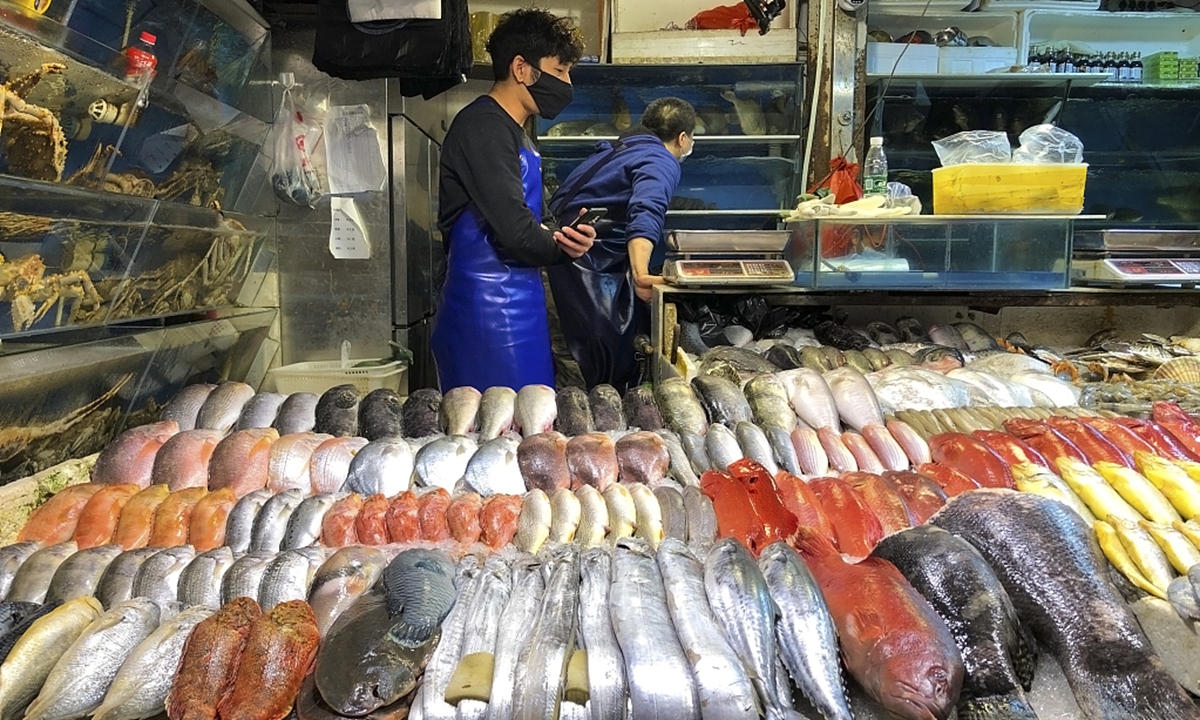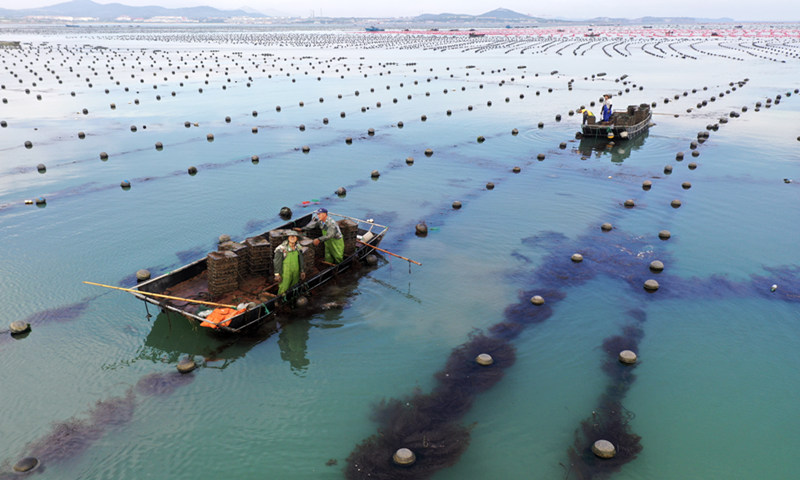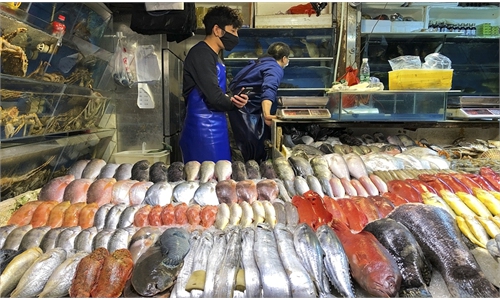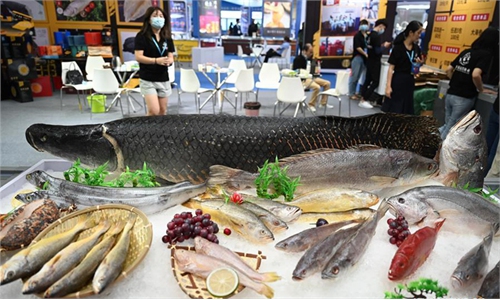
seafood Photo:VCG
Chinese seafood processing companies are beefing up supplies in response to growing global demand, including from the US market, while dealing with lingering snags such as ports congestion in the US.
Several domestic producers and traders told the Global Times on Wednesday said that they have seen rising orders or inquiries from many foreign countries such as the US.
The export quota of some Shandong-based companies in East China to the US increased significantly from 15 percent in 2021 to 50 percent this year, the largest jump compared with other countries.
Industry insiders said that the US market has a large sales volume for frozen products, and the trend has been more evident recently due to surging US inflation.
A trade manager surnamed Zhou with Shandong Haidu Ocean Product Co, a large seafood processing and exporting company, told the Global Times on Wednesday that US consumers have reduced their willingness to buy fresh seafood, because of higher prices, and instead choose frozen or processed seafood with long shelf lives and low prices.

Farmers collect and sort abalone in an aquatic culture zone in Weihai, a marine industry base and tourism city in East China's Shandong Province during the harvest season. Photo: VCG
Frozen seafood sales in April rose 2.8 percent and shelf-stable seafood sales jumped 9.6 percent on a yearly basis, according to analytic institutions IRI and 210 Analytics.
Rising seafood prices and consumer concerns about inflation in the US continued to harm fresh seafood sales in April.
For example, Zhou's company has seen rising orders from the US market since 2021. The export share of the US market has risen from 15 percent to about 50 percent now, and the other 50 percent is mainly exported to Europe, said Zhou.
Haidu Ocean is working at full capacity to ensure smooth supplies for overseas markets. But Zhou said that it's postponing deliveries due to backlog at major US ports.
"From the end of January to the end of March, our shipments to the US were not high, because a lot of goods were stacked at the US ports, and local customers could not receive the goods in time... some of our customers were only able to take the goods at ports half a month after arrival," Zhou said.
The long waiting times resulted in a lot of demurrage charges, an extra burden. Other issues such as difficulty seeking workers at the processing plants due to the pandemic are affecting the business outlook, the Global Times learned.
An exporter based in Weihai, Shandong Province said given the uncertainties posed by US port backlog, the company is exporting more to neighboring countries such as Japan and South Korea, where demand is also strong.
Customs data showed that in the first four months of 2022, China's aquatic product exports were $7.05 billion, a year-on-year increase of 14.2 percent.
Markets in developed countries are still the main driving force for China's agricultural exports.
Aquatic products are among the most export-competitive products for Chinese agricultural firms, and their export value has ranked first in the world for several years, with Asia, Europe and North America being the main markets, industry analysts said.
But it is the industry's off-season, and it is expected that the arrival of the peak season from October to December will bring seafood processing and exports back to a full rebound, Cui He, president of the China Aquatic Products Processing and Marketing Alliance, told the Global Times.



